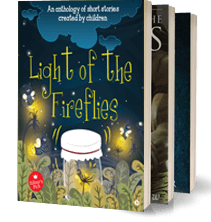
- Discover books
- For Writers
-
For Writers
-
Indie Author Championship
-
Challenges
Writing Contests
- Get Started

"It was a wonderful experience interacting with you and appreciate the way you have planned and executed the whole publication process within the agreed timelines.”
Subrat SaurabhAuthor of Kuch Woh Pal -
Dr.M.Muthuraj
1. Dr. B. Usharani has been working as Assistant Professor in the Department of Genetics, Dr. A.L.M Postgraduate Institute of Basic Medical Science, and the University of Madras. She has worked previously as Technical Officer in Jawaharlal Institute of Postgraduate Medical Education and Research and Foundation of Innovative New Diagnostics. She is a recipient of SRF ICMR grant and has successfully completed two research projects as Principal Investigator funded by Department of Science and Technology, Government of India. 2. Dr. S. Anbazhagi is presently Assistant Professor in the DepartmeRead More...
1. Dr. B. Usharani has been working as Assistant Professor in the Department of Genetics, Dr. A.L.M Postgraduate Institute of Basic Medical Science, and the University of Madras. She has worked previously as Technical Officer in Jawaharlal Institute of Postgraduate Medical Education and Research and Foundation of Innovative New Diagnostics. She is a recipient of SRF ICMR grant and has successfully completed two research projects as Principal Investigator funded by Department of Science and Technology, Government of India.
2. Dr. S. Anbazhagi is presently Assistant Professor in the Department of Environmental Science, School of Earth Science Systems, Central University of Kerala. She previously served as DST Young Scientist Fellow. She detected Norovirus strain for the first time in India in water and food samples. She is the recipient of several awards including UGC-NET, CSIR- Project Fellow, CSIR-SRF, DST International Travel Grant, ICMR Travel Grant, DST Young Scientist Fellow and UGC Post- Doctoral Fellowship for Women. She has successfully completed two major research projects as Principal Investigator funded by DST, Government of India. At present, she executes a UGC funded project.
3.Dr.C.K.Vidya Raj did her master degree in Microbiology and was awarded gold medal from Pondicherry University. She actively pursues her research and academic interest as a consultant in Microbiology in level III bio safety research lab in Government of Puducherry. She has publications in peer reviewed journal and engages in teaching activities
4. Dr.M.Muthuraj is Head of the Department of Microbiology, Intermediate Reference Laboratory, State TB Training and Demonstration Centre, Government Hospital for Chest Diseases. He has previously worked for an antibiotic fermentation project and vaccine projects in multinational companies. He has successfully completed two major research projects (Indo-US) as Co-Investigator funded by Department of Biotechnology, Government of India. At present, he executes various national and international funded projects.
Read Less...
Crop your profile image

Polymerase Chain Reactions
Books by Dr. M. Muthuraj, Dr. B. Usharani, Dr. S. Anbazhagi, Dr. C.K. Vidya Raj, Dr. K. Venkatesh
This book describes how to perform and optimize the various types of Polymerase Chain Reactions (PCR) for postgraduate students, scholars and researchers in all branches of life science. PCR is a method widely used to rapidly make millions to billions of copies of specific DNA samples, allowing scientists to take a very small sample of DNA and amplify it (or a part of it) to a large enough amount to study in detail. This book also deals with molecular biology
This book describes how to perform and optimize the various types of Polymerase Chain Reactions (PCR) for postgraduate students, scholars and researchers in all branches of life science. PCR is a method widely used to rapidly make millions to billions of copies of specific DNA samples, allowing scientists to take a very small sample of DNA and amplify it (or a part of it) to a large enough amount to study in detail. This book also deals with molecular biology reagents preparation and general laboratory procedures, equipment use and safety precautions. The various forms of pathogenic agents drastically affect human society and bring human life notoriously. The correct and exact details of these creatures can be derived through the prompt diagnosis of pathogens as early as possible. The current form of diagnosis is molecular diagnostics, but optimization and standardization are most important for the exact quality of results.
This book is written with the need to address the technical problems while optimizing the PCR reactions in mind. The same procedure is fully applicable whenever techniques are being handled in life science laboratories. The textbook encourages the persons who engage in microbiology, molecular biology and life science laboratory to accept and implement basic concepts in various types of PCRs and develop in-house techniques for day-to-day routine activities. This book also deals with the major junk areas while designing primer for various types of PCRs and deals with how to address and troubleshoot the issues that arise while doing various forms of PCRs. This book also deals with post-PCR activities and troubleshooting of gel electrophoresis.
Biosafety in Microbiological Laboratories
Books by Dr.M.Muthuraj ,Dr.B.Usharani, Dr.S.Anbazhagi And Dr. C.K.Vidya Raj
The book describes how to handle hazardous materials in various Biosafety levels, use microbiological good laboratory practices and maintenance of various biosafety cabinets. It is written with the needs of biosafety and biosecurity in mind. The same procedure is fully applicable whenever biohazard materials are handled in life science laboratories. The manual encourages persons who engage in the microbiology laboratory to accept and implement basic concepts i
The book describes how to handle hazardous materials in various Biosafety levels, use microbiological good laboratory practices and maintenance of various biosafety cabinets. It is written with the needs of biosafety and biosecurity in mind. The same procedure is fully applicable whenever biohazard materials are handled in life science laboratories. The manual encourages persons who engage in the microbiology laboratory to accept and implement basic concepts in biological safety and to develop national codes of practice for the safe handling of pathogenic microorganisms in laboratories within their geographical borders.
It provides international leadership in biosafety by addressing biological safety and security issues facing us in the current millennium. This book stresses the importance of personal responsibility, risk assessment, safe use of recombinant DNA technology, and transport of infectious materials.
Recent world events have revealed new threats to public health through deliberate misuse and release of microbiological agents and toxins. The book introduces biosecurity concepts – the protection of microbiological assets from theft, loss, or diversion, which could lead to the inappropriate use of these agents to cause public health harm.

Are you sure you want to close this?
You might lose all unsaved changes.
Select from one of our global stores to continue
 India
India
 Malaysia
Malaysia
 Singapore
Singapore
 UAE
UAE
Warning Message
The items in your Cart will be deleted, click ok to proceed.












